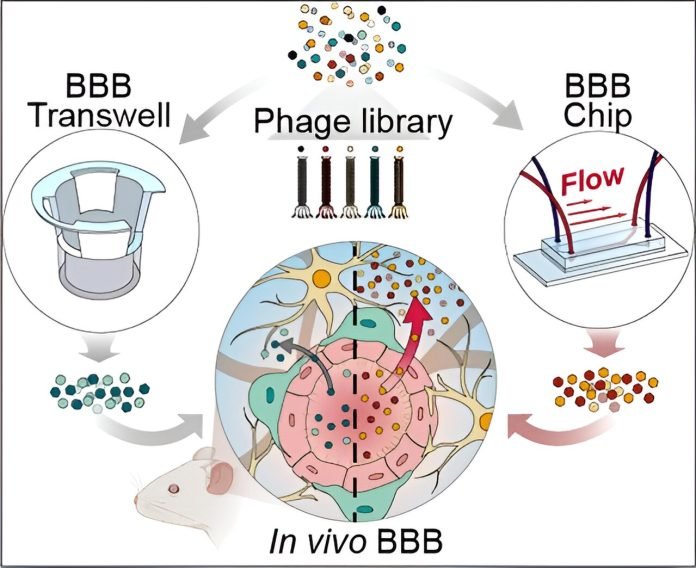
Optimizing drug delivery systems (DDS) to work effectively in the body is essential for treating diseases.
Researchers from UNIST (Ulsan National Institute of Science and Technology) have developed an innovative method to improve drug delivery using organ-on-a-chip (OoC) technology.
Their findings, published in ACS Nano, show that OoC technology can accurately mimic how drugs move through blood vessels, especially targeting the brain.
The team, led by Professors Tae-Eun Park and Taejoon Kwon from the Department of Biomedical Engineering at UNIST, created an OoC that replicates the blood-brain barrier (BBB) using mouse cell cultures.
The BBB is a protective layer that controls what substances can pass from the blood into the brain, making it a crucial factor in brain drug delivery. By mimicking the BBB, the researchers achieved significantly improved drug permeability.
Using a method called cell-based phage display screening, the team accurately simulated the physiological characteristics of organs.
This approach set a new standard for in vitro (outside the body) modeling, showing better results than traditional methods.
The study demonstrated enhanced cerebrovascular permeability, meaning drugs could pass through the BBB more effectively.
The researchers believe that OoC technology can be used to develop targeted treatments for other organs as well, including the liver, kidney, and lung.
By replicating the biological environment within the chip, they could study how drugs move and interact with blood vessel surfaces.
One key finding was the discovery of an effective drug-delivery peptide. The chip simulated blood flow and the structure of glycocalyx (a layer on blood vessel surfaces), which helped identify this peptide. This discovery shows the potential for using OoC technology to find new ways to deliver drugs to specific organs.
Co-author Jeong-Won Choi highlighted the potential of long-term chip technology as a powerful tool for discovering drug carriers with targeted functions. By closely mimicking biological environments, researchers can find more effective ways to deliver drugs.
Kyungha Kim, another co-author, added that their work proves that long-term chip technology can accurately model human biological tissues. This opens up new possibilities for future drug delivery research, making treatments more effective and targeted.
The development of OoC technology marks a significant advancement in the field of drug delivery.
By accurately mimicking the BBB and other biological environments, researchers can study how drugs move through the body and discover new ways to deliver treatments to specific organs.
This technology holds great promise for improving the effectiveness of drug treatments and could revolutionize how we approach the development of new therapies.



